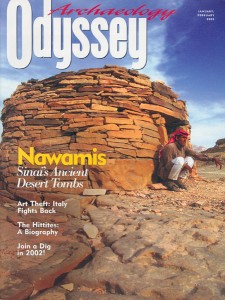
Why spend your summer vacation on your hands and knees or crawling up ladders and down into trenches when you could be lounging by the pool, sipping piña coladas? Well, many archaeology enthusiasts imagine unearthing a tarnished coin last touched by an ancient Athenian as he bought bread in the marketplace, or uncovering a pot that once held spices caravanned thousands of miles across the desert. Actually handling the past gives them a handle on the past; a visceral sense that the ancients led quotidien lives shaped by the same human needs as our own.
This reaffirmation that there’s truly nothing new under the sun is especially comforting after the traumatic events of the fall. Now more than ever it seems important to dispassionately examine history, to glean facts from artifacts. Samuel Johnson (1709–1784), the English author, lexicographer and literary critic, got it exactly right when he remarked that “All history, so far as it is not supported by contemporary evidence, is romance” (James Boswell’s Tour to the Hebrides, 1773).
Searching for “contemporary evidence” on an archaeological dig can be a lot of fun, too. Maybe you’ll be the one to come across traces of a Neolithic stone circle on the Isle of Man or dust off a piece of chain mail worn by a Roman legionnaire stationed at Hadrian’s Wall on England’s northern border. It could be you who uncovers the timber foundations of a Roman military workship in Alchester, Oxfordshire (below).
Already a library member? Log in here.
Institution user? Log in with your IP address.

